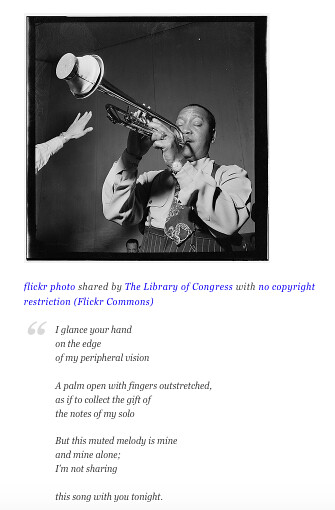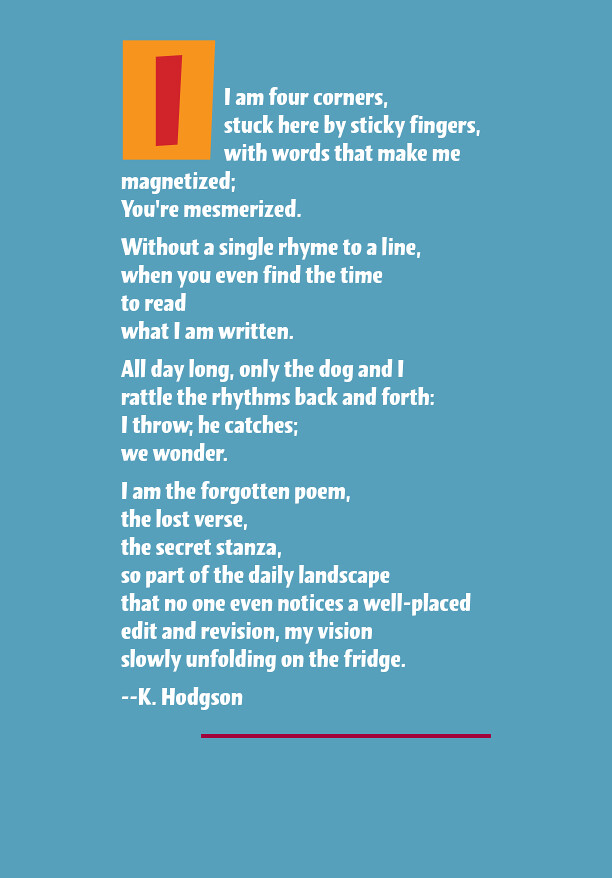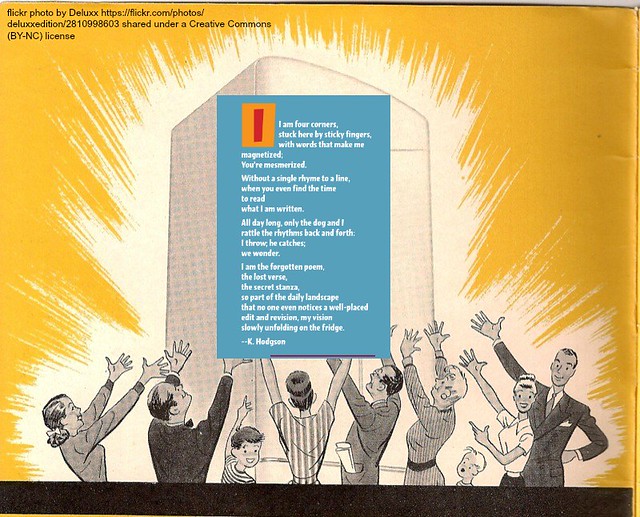It’s not the first time I have tried to write a poem every day for an entire month, but I always start and think: I am never going to do this. I am never going to find enough things to write about. I am going to bore myself and everyone else with my feeble verse. This is what I think before I write and then forget about while I write.
Luckily, I had some friends along the way. Mary Lee, Carol and Carol, and Steve, and Margaret, and assorted others who were also writing poems, if not every day than most days. Actually, Mary Lee’s project to write poems about her family tree inspired by an old photo album got many of us writing poems in her blog’s comments, too. Writing is a different experience — more connected — when you write with others.
I started off the month in a sort of free-style mode, not choosing a particular style/genre nor topic, and I used a variety of technology tools to construct the writing into something more design-friendly. As always, when writing in bursts, some of the poems came out better than others. But overall, I was happy with many of them.
After reading Mary Lee’s family poems, and Steve’s poems inspired by the digital archives at the New York Public Library, I decided to revisit the Flickr archives of the US Library of Congress. There are treasure troves of available images by the Library of Congress, and many are evocative for storytelling. I tried to vary the subjects of the images so that my poems might take shape in different ways. There are a few gems in this mix, I think.
I then ventured into Blackout Poems, where you remove words to leave words that make up verse. I always feel a little hamstrung with Blackout Poems, struggling with trying to suss out a poem from existing text. But when it works, it is very cool.
I ended the month with haikus, but my twist was I went back into my recent image files, seeking out pictures that might inspire three lines of poetry. For the most part, I liked how they came out, and worked hard to ensure that the image was partner to the words. Finding that balance with these kinds of poems are critical.
Beyond my daily poems, I also left scattered poems as comments at people’s blog sites. I don’t even know where they are anymore. But I hope they were well-received. I did do a poem for a late April DS106 Daily Create that I liked. The prompt was to put a poem on a door of a refrigerator and take a picture. I sort of cheated — no real fridge — but the poem was real, and I like how the poem is about the poem being a poem.
and
Peace (it’s poetry),
Kevin






The notion of poetic stances deliberately struck is a one that appeals to my own view of poetic craft. Most of what I write might be technically known as rubbish, but the stance and the observations made lead to every sharpening view of what is often a view dimly lit and even more obscurely understood. But that rotating through a repertoire of seeing makes knowing so much better, not easier, just better.
I think sharing your discovery that the well of writing is artesian and that all you have to do in dip your drinking gourd in is one that I share but need reminding of. Of creating (good or ill) there is no limit. Homo faber.
ante-
anti-
auntie-
antlike-spamididdlyiddlyoo00: The tunnel was dug under the enemy lines, the black powder charges were primed and ready to blow, all that was needed was for the sappers…No, not ye……
Thanks, Terry. Repertoire Rotation is a good band name.
Kevin